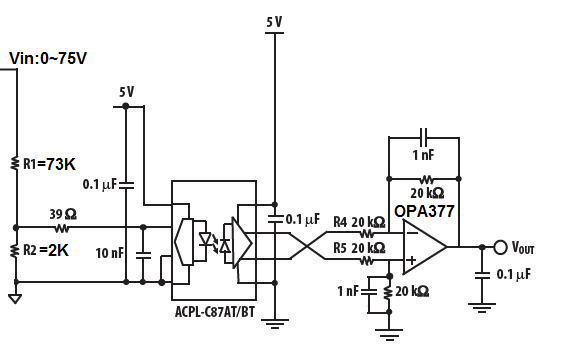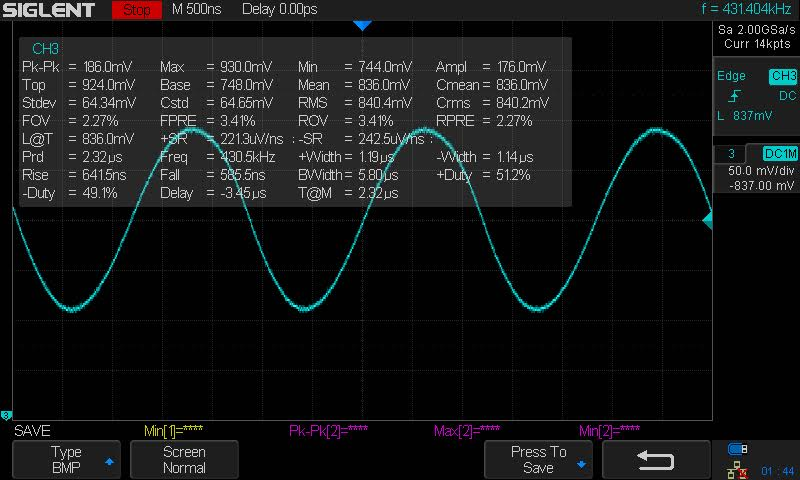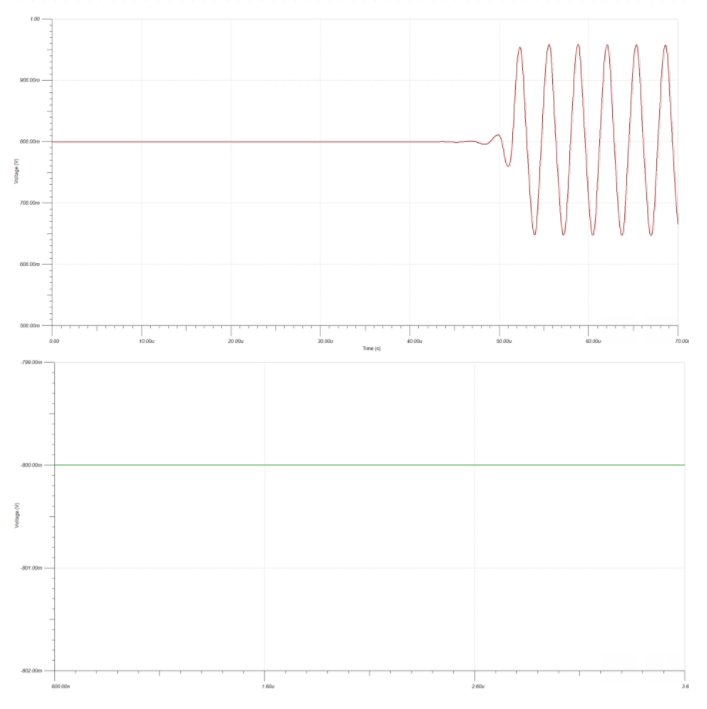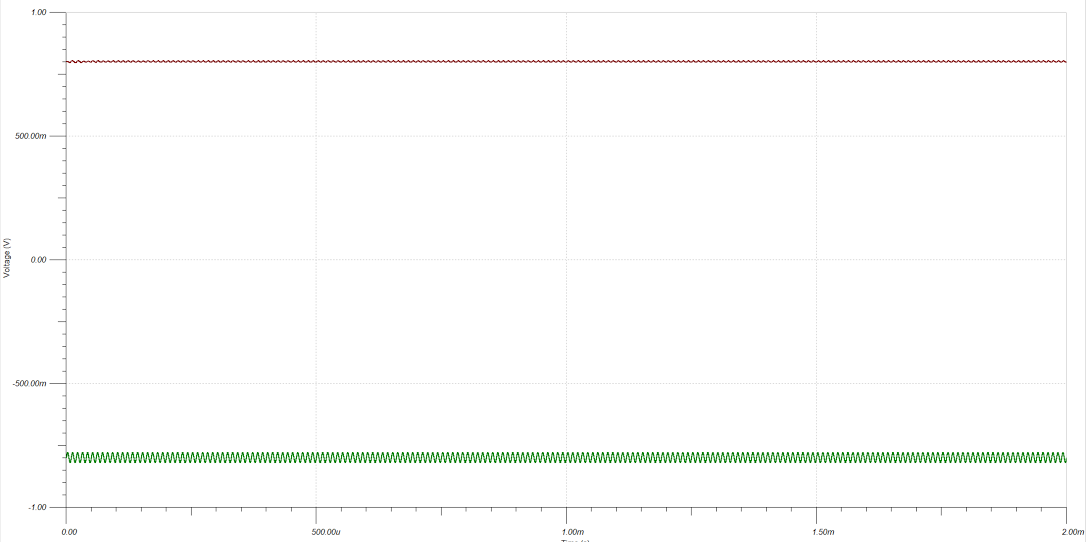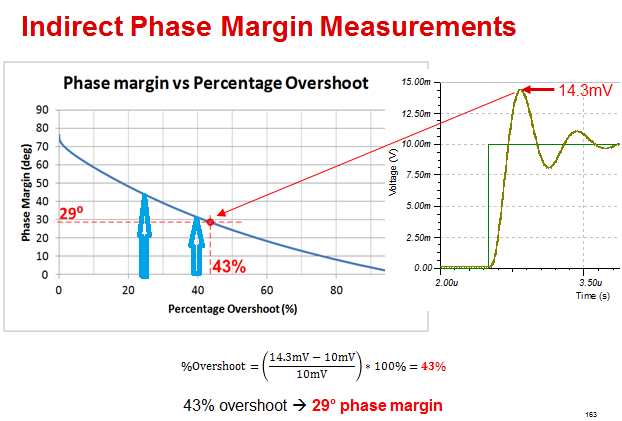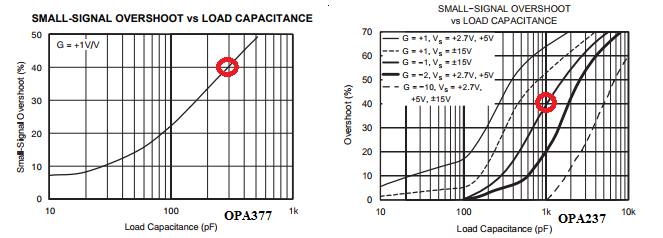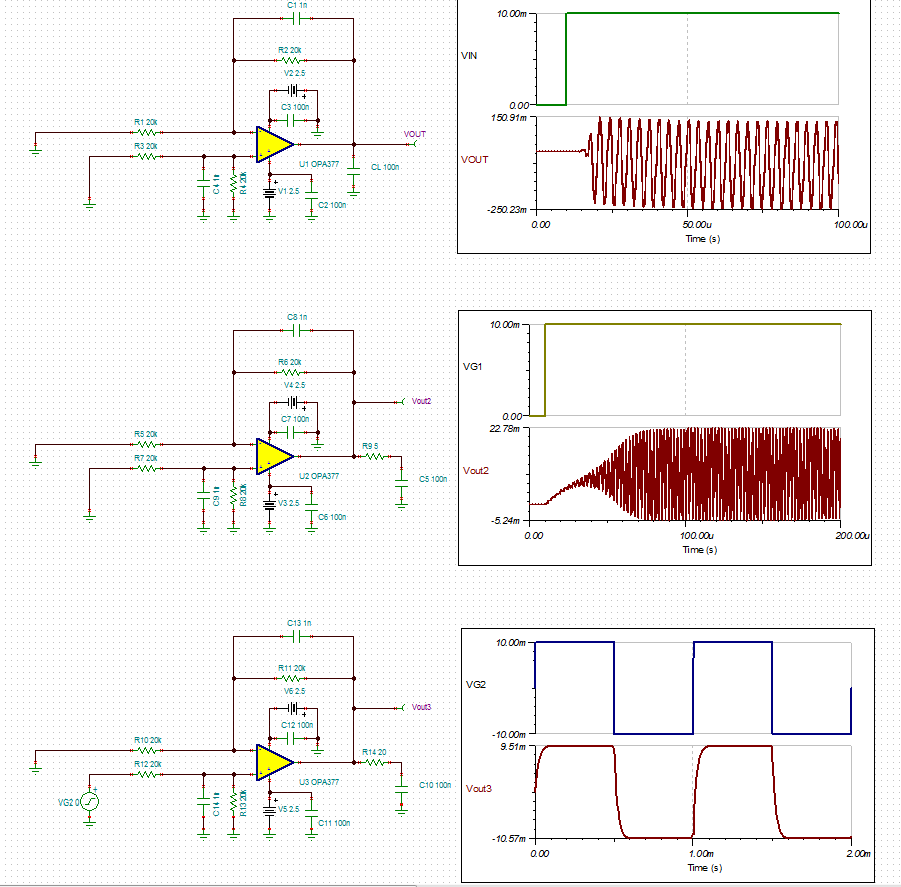Other Parts Discussed in Thread: OPA377, OPA237
I have a question regarding to OPA377 and OPA237. I use your OPA377 in differential amplifier. The schematic shown below.
The voltage I'm sensing is 32V. Voltage into the opto is 32V*2/75= 0.85V. The output waveform shows below.
I did a simulation in Tina, with 1uV 50kHz disturbance, the output of differential amplifier is oscillating.
If I replace OPA377 with OPA237UA, the output is good even with 50mV disturbance.
After replacing it with OPA237UA on my board , the output oscillation is gone. May I know why these two OP AMP behave so different? And if I want an AEC-Q part to replace OPA237, what should I use?


